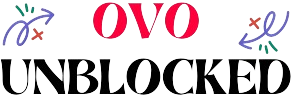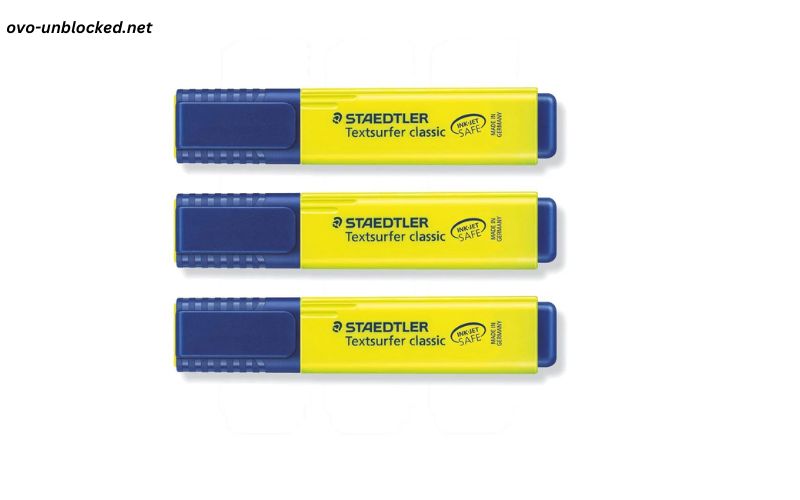The History of Highlighters
The highlighter, as we know it today, emerged from a long history of ink development. The earliest forms of highlighting can be traced back to ancient civilizations, where scholars would use a form of ink to mark significant texts. However, the modern highlighter owes its existence to the invention of fluorescent ink in the 1960s. This innovation, which allows ink to glow under ultraviolet light, paved the way for the creation of highlighters.
The first highlighter was invented by Dr. Frank Honn, who worked for the Carter’s Ink Company. In 1963, he introduced the Hi-Liter, the first pen specifically designed to highlight text. The Hi-Liter used water-based ink that was transparent and fluorescent, allowing readers to mark text without obscuring it. The original Hi-Liter was yellow, a color that quickly became the standard for highlighters.
Why Yellow?
The choice of yellow as the primary color for highlighters is not arbitrary. Yellow is a color that is highly visible without being overwhelming. It is bright enough to draw attention to the highlighted text but not so intense that it distracts from the content. Additionally, yellow is one of the few colors that remains visible even when photocopied, which was an important consideration in the pre-digital age when photocopying was a common way to share documents.
Psychologically, yellow is associated with happiness, energy, and attention. It is a color that naturally draws the eye, making it an ideal choice for highlighting. The use of yellow highlighters is so widespread that the color has become almost synonymous with the act of highlighting itself.
The Science Behind Highlighting
Highlighting is more than just a way to mark important information; it is also a cognitive tool that can enhance memory and comprehension. When we highlight text, we are actively engaging with the material, which helps to reinforce learning. This process, known as active reading, encourages us to think critically about the content and identify the most important points.
Research has shown that highlighting can improve retention of information, particularly when used in conjunction with other study techniques such as summarizing or reviewing notes. The act of selecting and marking key information helps to solidify it in our minds, making it easier to recall later.
However, not all highlighting is equally effective. Studies have found that excessive highlighting, where large portions of text are marked, can actually be counterproductive. When too much is highlighted, it becomes difficult to distinguish between truly important information and less critical details. To maximize the benefits of highlighting, it is important to be selective and strategic in what is marked.
The Role of Yellow Highlighters in Education
In educational settings, yellow highlighters are invaluable tools for both students and teachers. For students, they provide a way to organize and prioritize information in textbooks, articles, and notes. Highlighting key terms, definitions, and concepts can make studying more efficient and help students focus on the most important material.
Teachers also use yellow highlighters to guide students through reading assignments and emphasize critical points in lectures. Instructors may highlight passages in handouts or textbooks to direct students’ attention to specific information. This visual cue can help students better understand the material and improve their overall comprehension.
Beyond the classroom, yellow highlighters are essential for preparing for standardized tests. Students often use them to mark important sections in study guides or practice exams, making it easier to review key information before the test.
Yellow Highlighters in the Workplace
Yellow highlighters are just as important in the workplace as they are in educational settings. In offices, they are commonly used to emphasize key information in documents, reports, and emails. By highlighting important sections, employees can quickly identify the most relevant information, which can save time and improve productivity.
In professions that require a high level of attention to detail, such as law, finance, and editing, yellow highlighters are indispensable. Lawyers, for example, may use them to mark important clauses in contracts or legal briefs. Financial analysts might highlight key figures in reports, while editors use them to flag errors or important changes in manuscripts.
Moreover, yellow highlighters play a crucial role in project management. Project managers often use them to highlight deadlines, milestones, and other critical information in project plans or timelines. This helps to ensure that everyone on the team is aware of important dates and tasks, reducing the risk of missed deadlines.
The Cultural Impact of Yellow Highlighters
The yellow highlighter has become a cultural icon, representing organization, focus, and clarity. It is often associated with diligent students, detail-oriented professionals, and anyone who values efficiency and precision. The image of a well-highlighted page has become a symbol of thoroughness and careful consideration.
Yellow highlighters have also made their way into popular culture. They are frequently depicted in movies, television shows, and advertisements as symbols of intelligence and hard work. In these portrayals, the act of highlighting is often shown as a moment of insight or discovery, emphasizing the importance of the marked information.
The Evolution of Highlighters
While the yellow highlighter remains a favorite, the world of highlighters has evolved significantly since the introduction of the Hi-Liter. Today, highlighters come in a wide range of colors, from neon pink to pastel blue. Some highlighters even feature multiple colors in a single pen, allowing users to color-code their notes or documents.
In addition to traditional highlighters, there are now digital highlighters, which allow users to mark text on a screen. These tools are particularly useful for those who work with digital documents, as they offer the same benefits as physical highlighters without the need for paper. Digital highlighters often come with additional features, such as the ability to search for highlighted text or add notes.
Another recent innovation is the erasable highlighter, which allows users to remove highlighting if they change their minds. This feature is especially useful for those who may accidentally highlight the wrong section or want to reuse materials for different purposes.
Environmental Considerations
As with many other office supplies, there is growing awareness of the environmental impact of highlighters. Traditional highlighters are typically made from plastic and contain ink that may not be biodegradable. As a result, used highlighters can contribute to plastic waste and environmental pollution.
In response to these concerns, some companies have started producing eco-friendly highlighters. These products are made from recycled materials, use non-toxic inks, and are designed to be refillable. By choosing eco-friendly highlighters, consumers can reduce their environmental footprint while still enjoying the benefits of highlighting.
Conclusion
Yellow highlighters may seem like simple tools, but they have a profound impact on how we process and retain information. From their origins in the 1960s to their place in modern classrooms and offices, yellow highlighters have proven to be indispensable. Their ability to draw attention to important information, enhance memory and comprehension, and symbolize focus and organization makes them a valuable asset in both academic and professional settings.
As we move forward, the yellow highlighter will continue to evolve, adapting to new technologies and environmental considerations. Whether in physical or digital form, it will remain a trusted tool for students, professionals, and anyone who values clarity and efficiency.

